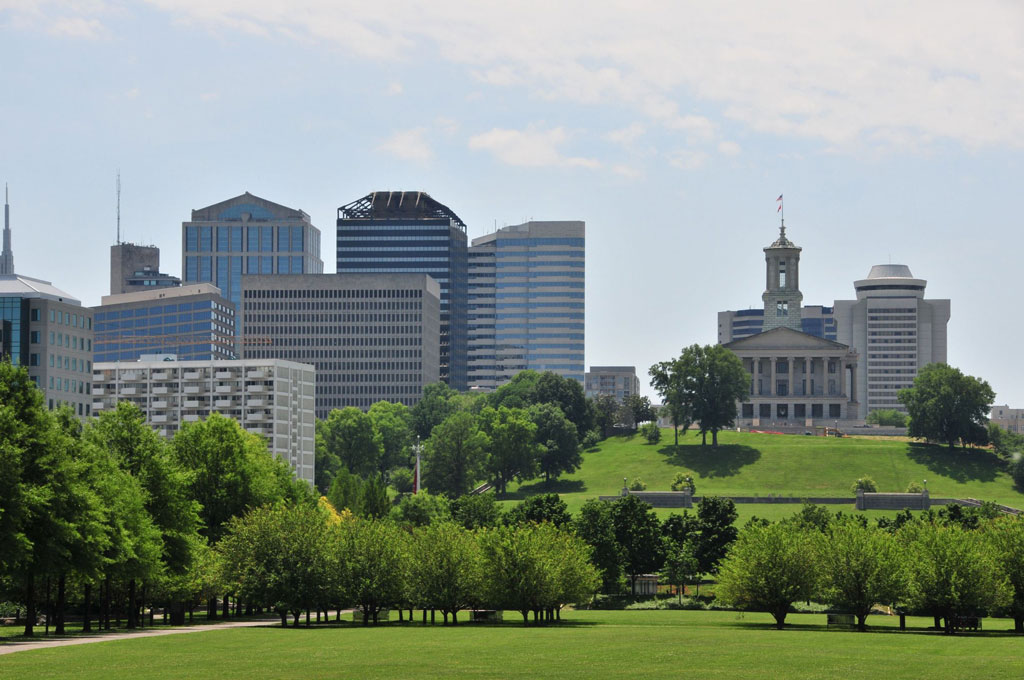The Climate and Geography of Nashville
Middle Tennessee is home to Tennessee’s capital city, Nashville, and some of its most fertile farmland. Before the Civil War, great plantation mansions dotted the countryside south of Nashville. Today, Tennessee Walking Horse farms, new industries, and the economic success of Nashville continue to make Middle Tennessee prosperous.

Geographically, Middle Tennessee begins with the Cumberland Plateau, which rises to about 2,000 feet above sea level and lies west of East Tennessee’s Great Valley. Despite its name, the plateau is not flat; there are a number of steep valleys in the plateau, the largest being the Sequatchie Valley.
The Highland Rim is a region of hills, valleys, and fertile farmland that lies west of the plateau. The largest physical region of Tennessee, the Highland Rim contains 10,650 square miles of land, or almost 25 percent of the state. Almost entirely surrounded by the Highland Rim is the Central Basin, a low, flat, and fertile region in north-central Tennessee. Nashville is located in the Central Basin.
Nashville itself sits at 550 feet above sea level. It is the U.S. city with the second-largest land mass: more than 500 square miles.
Newsletter Signup
By clicking ‘Sign Up,’ I acknowledge that I have read and agree to Hachette Book Group’s Privacy Policy and Terms of Use
Climate
Nashville enjoys a relatively mild climate, with average temperatures ranging from 38°F to 80°F. Summer days can feel very hot, however, and a run of humid 100°F days in August is not unusual. A few flakes of snow may fall in the winter, and the city essentially shuts down when there is any accumulation, although that is rare. Generally, an evening’s snowfall has evaporated by mid-morning.
The city receives an average of 45 inches of rain per year. Long springs and falls mean a long season for beautiful flowers, but also a long season for allergy sufferers.
Floods
The devastating flood in Nashville and Middle Tennessee in May 2010 brought the issue of global climate changes, combined with manmade development and water management, to the forefront of the minds of city planners and residents. The flood caused more than $1.5 billion of damage to the Music City. At press time, most of the commercial public repairs to the city had been made, but residential redevelopment continues.
Newsletter Signup
By clicking ‘Sign Up,’ I acknowledge that I have read and agree to Hachette Book Group’s Privacy Policy and Terms of Use
Pin it for Later


